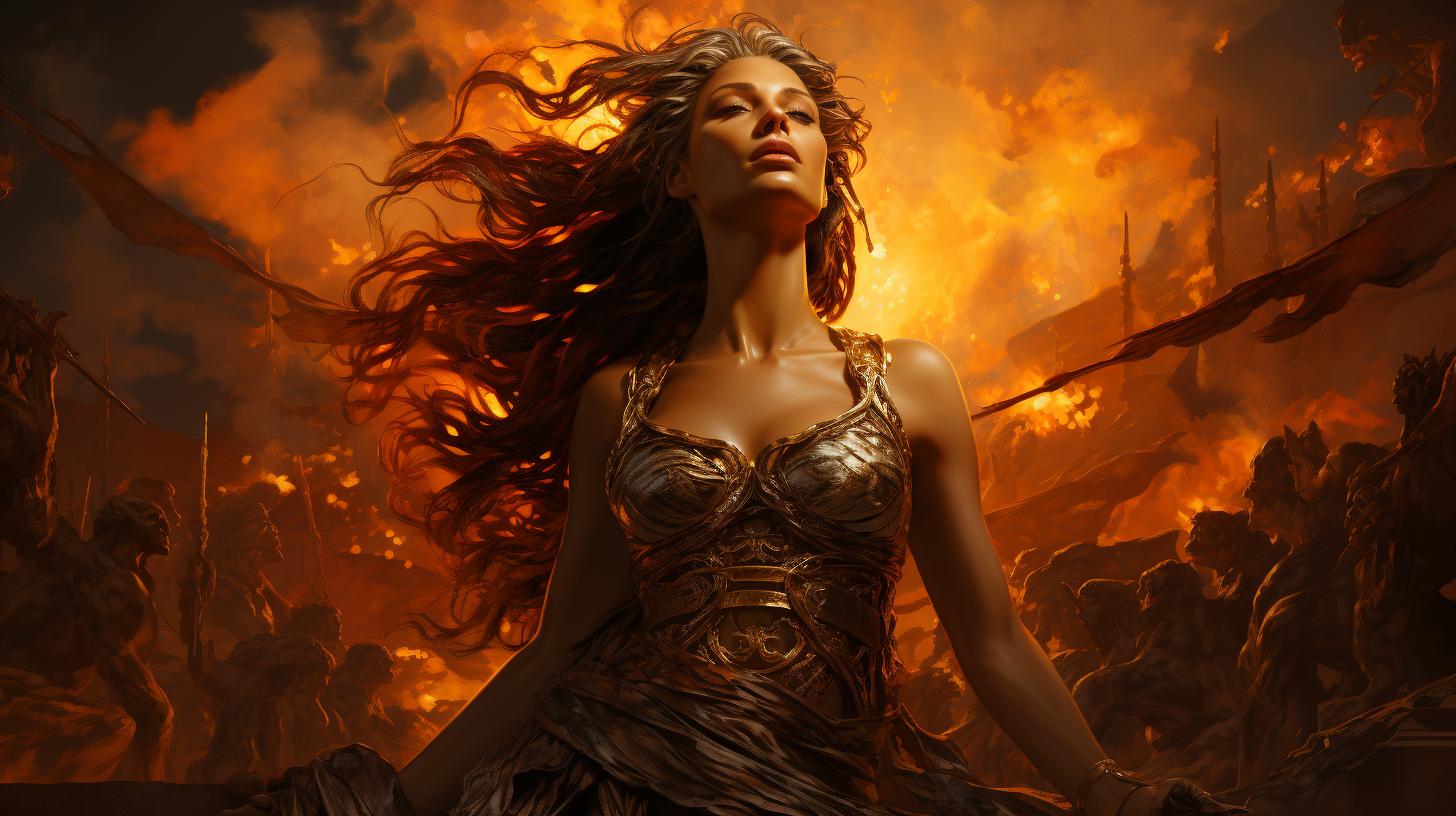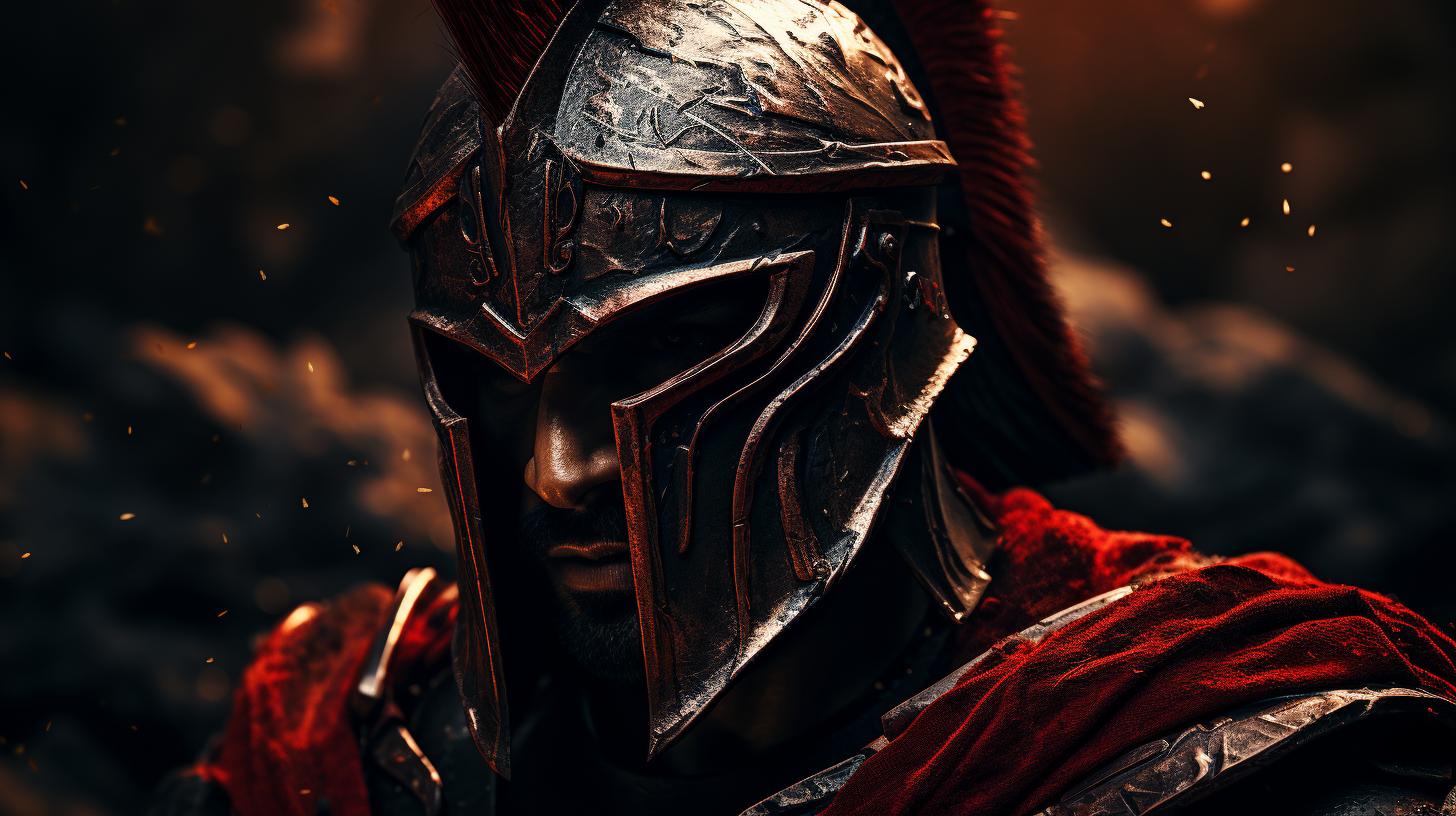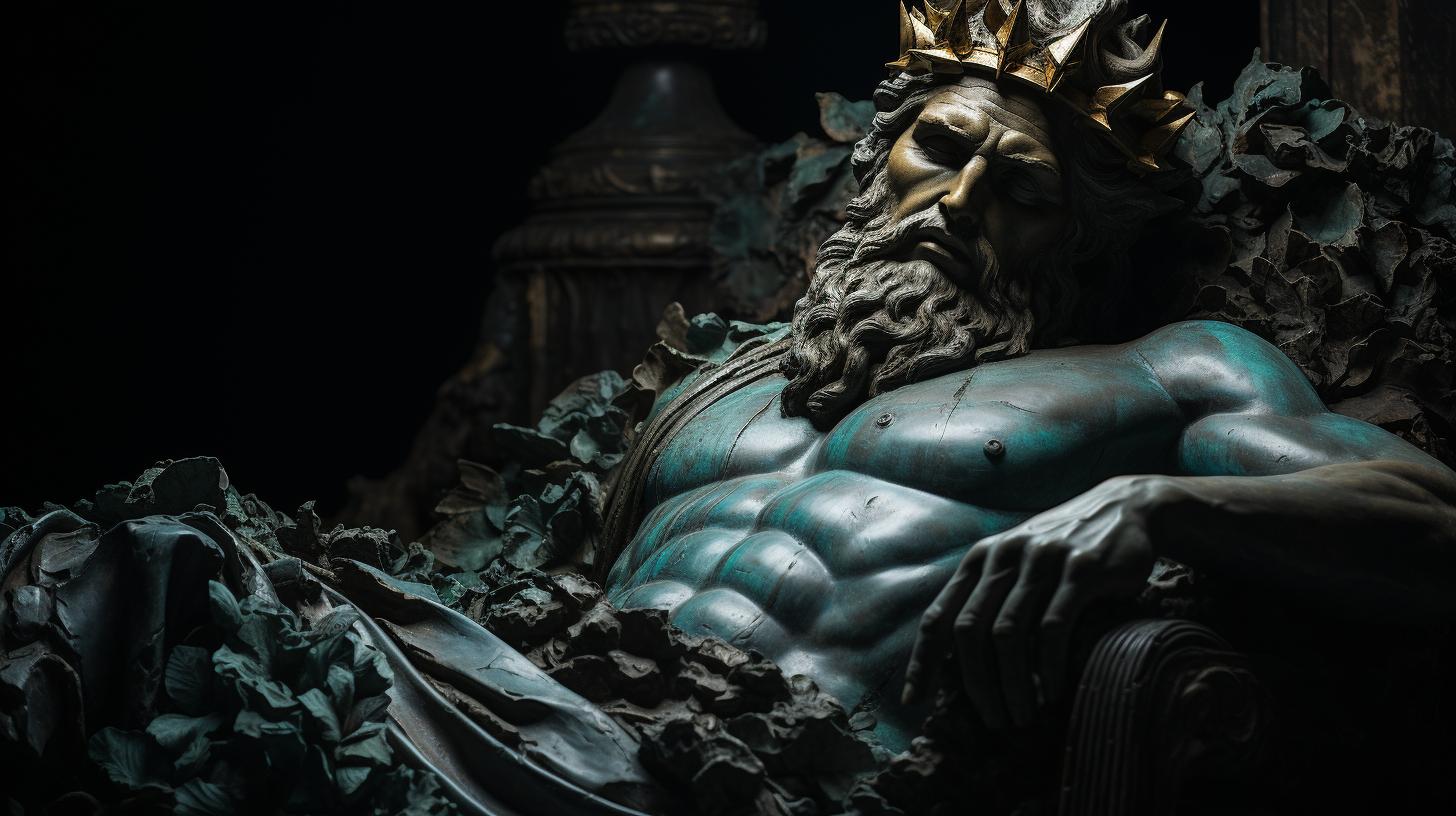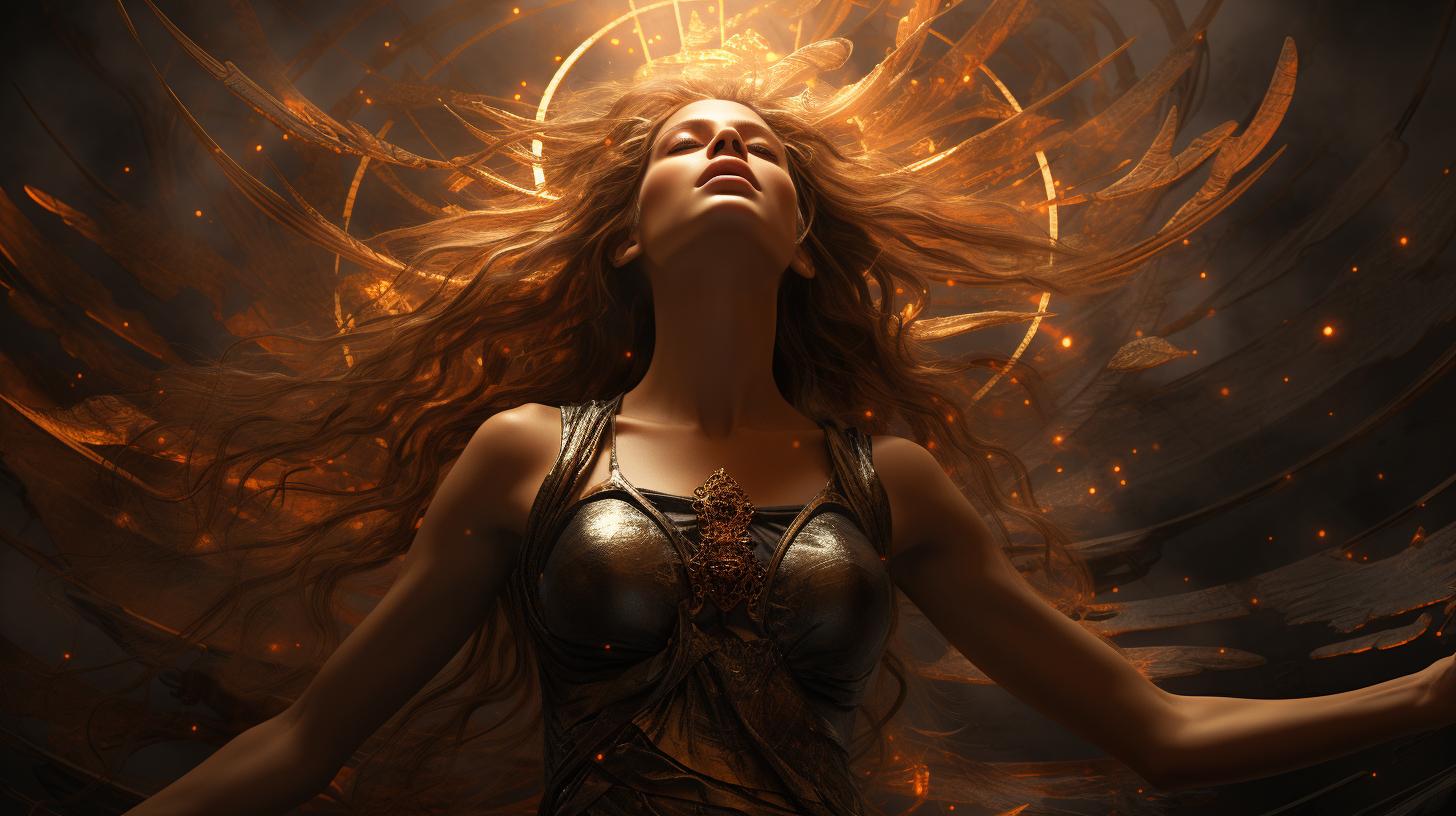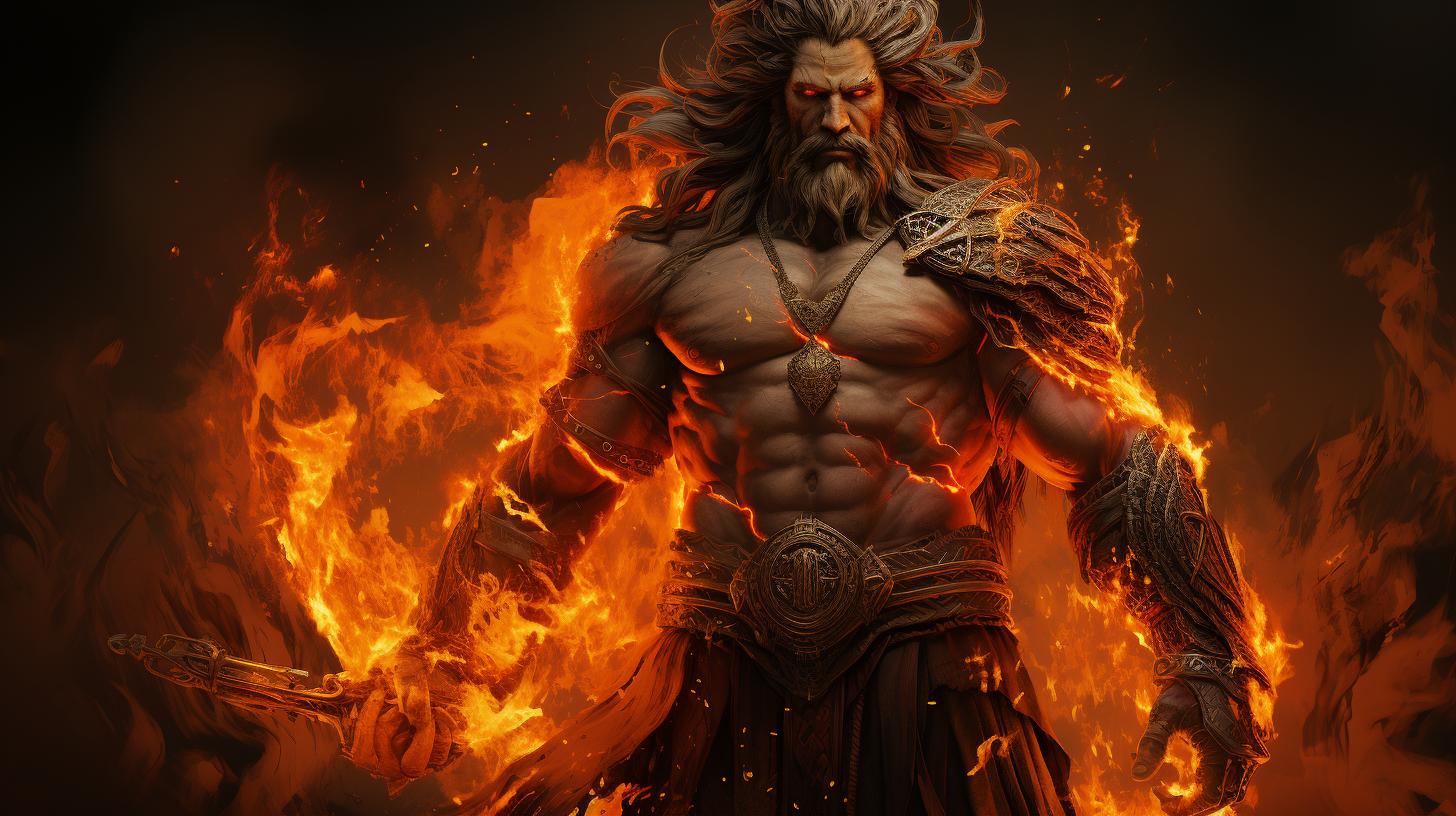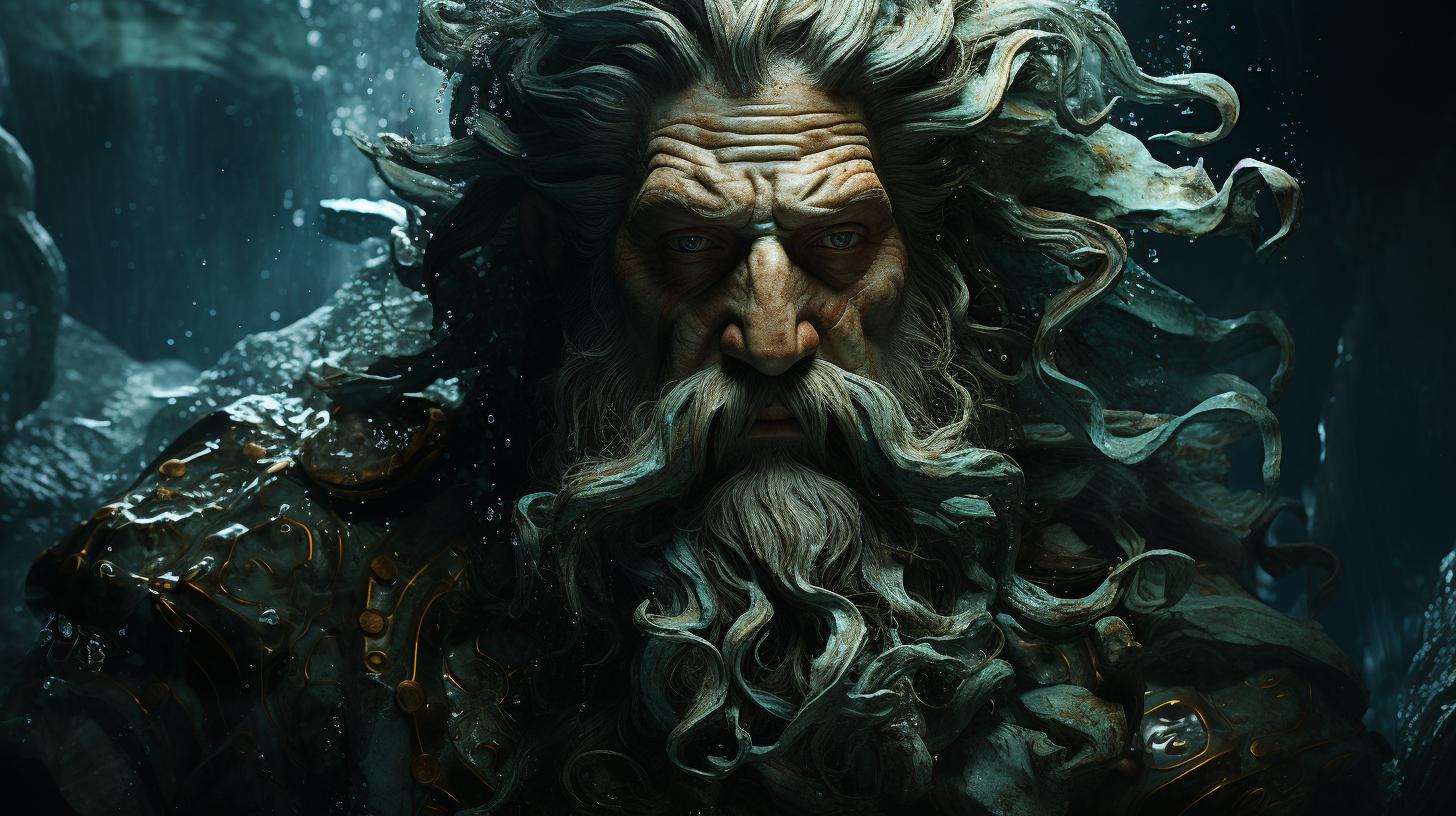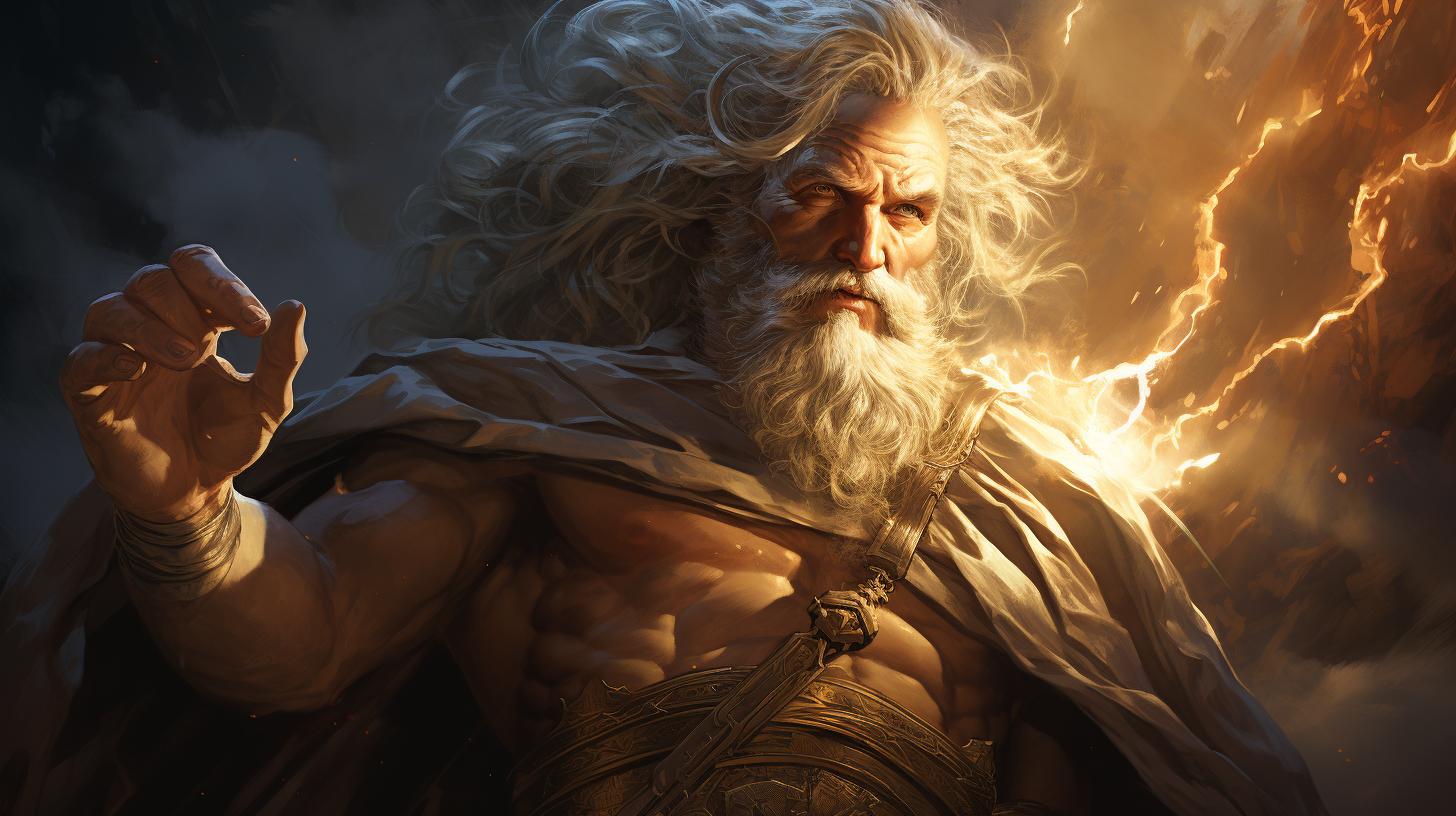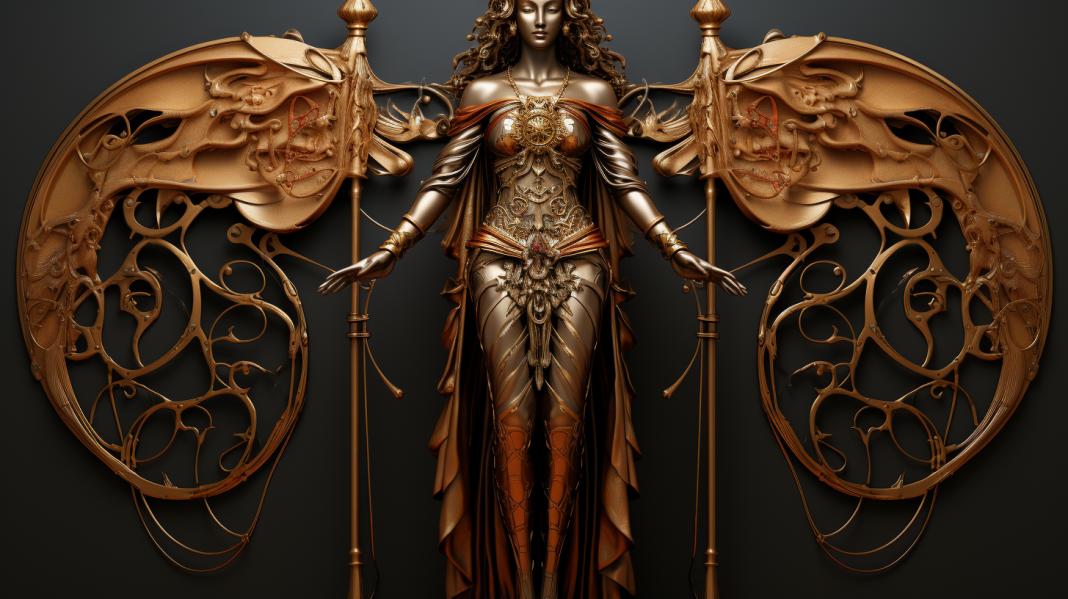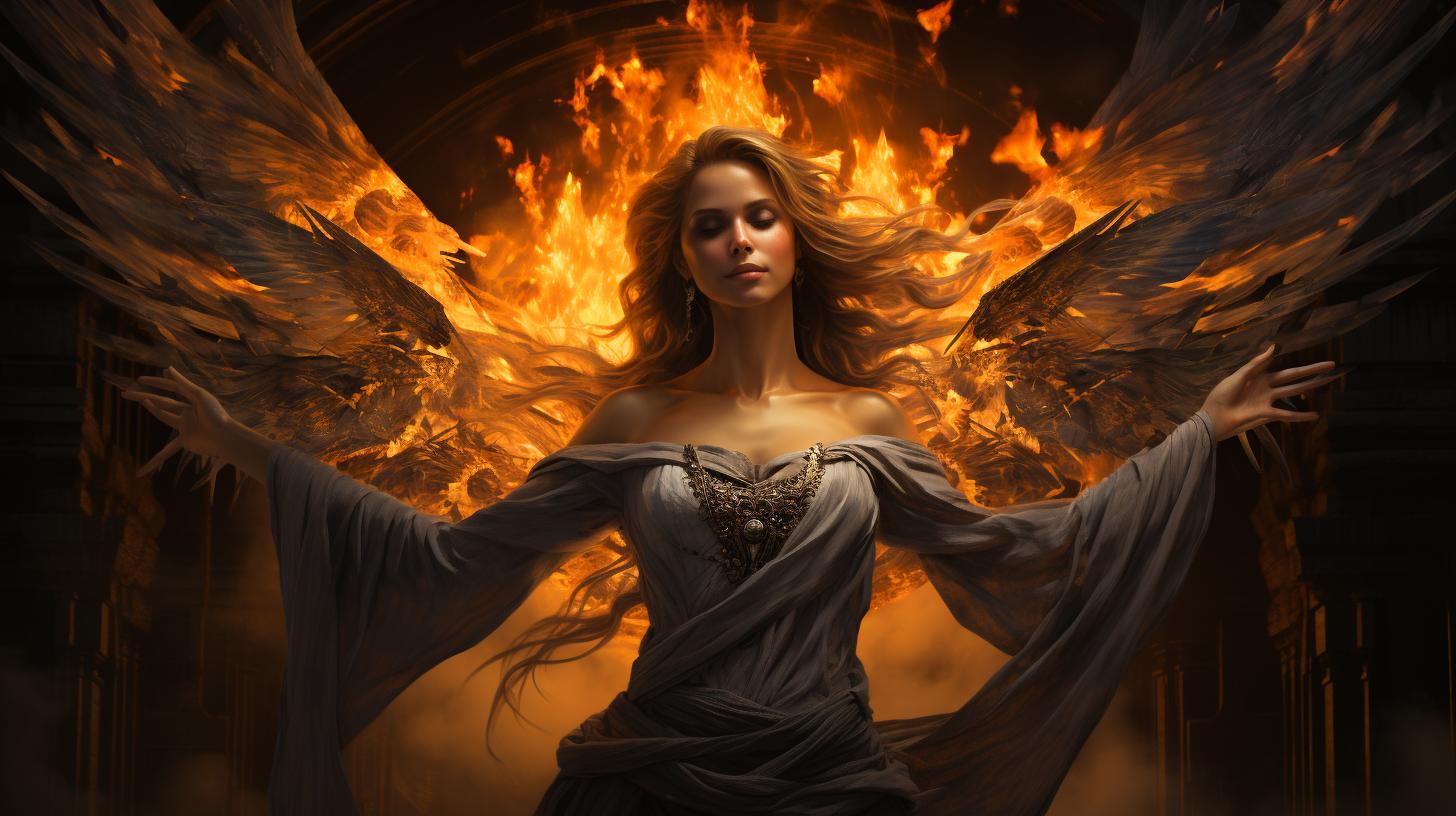Menrva Etruscan Goddess: A Unique Tale of War, Art, Wisdom, and Healing in Ancient Rome
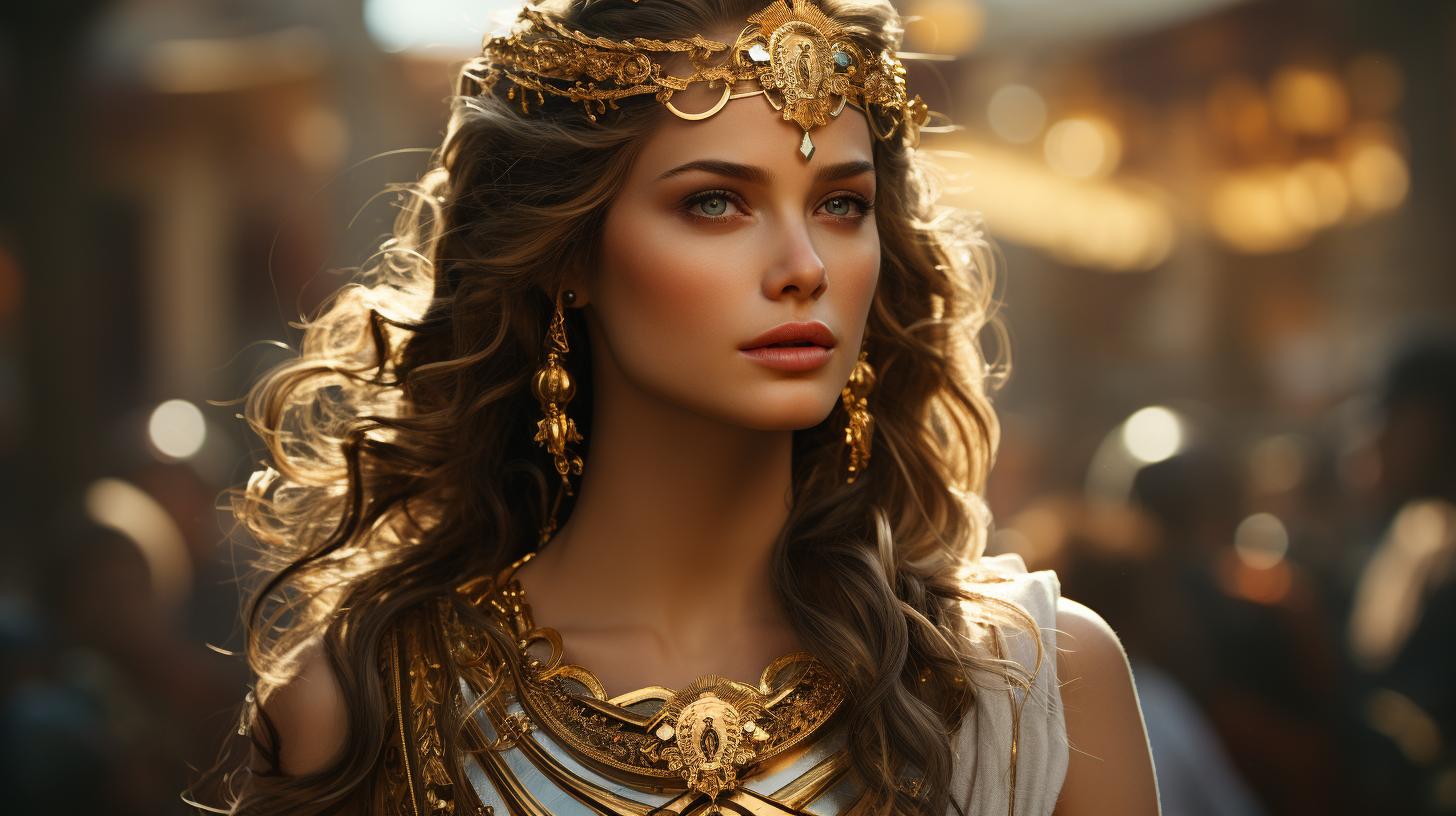
Menrva, the Etruscan goddess of war, art, wisdom, and healing, holds a unique position in Etruscan and Roman mythology. Influenced by Greek culture, Etruscan artists often depicted Menrva with the Gorgoneion, helmet, spear, and shield.
She is mentioned in various mythological contexts, such as assisting Perseus and holding the head of Medusa. Unlike her Greek counterpart Athena, Menrva is associated with weather phenomena. Furthermore, Menrva plays a significant role in healing, with evidence of her connection to curative waters and votive offerings.
She is also intertwined with mythological tales, including the Judgment of Paris and the myth of Hercules and the Hydra. The origins and interpretations of Menrva continue to be subjects of debate and scholarly exploration.
The Goddess Menrva in Etruscan Mythology
Menrva, the enigmatic Etruscan goddess, holds a significant place in Etruscan mythology. Throughout the years, scholars have delved into various aspects of Menrva’s existence, seeking to unravel the mysteries surrounding her origin, name, unique attributes, and symbolism.
This exploration also involves drawing comparisons to the well-known Greek goddess Athena. Let’s embark on a journey to discover the captivating world of Menrva in Etruscan mythology.
Origins and Name
The origins of Menrva’s name have long intrigued researchers.
It is believed to have Etruscan roots, potentially derived from the Italic lunar goddess with the name “*Meneswā,” meaning “She who measures.” The Etruscans adopted this name in ancient Latin, transforming it into “Menrva.”
However, the precise origins of her name continue to be subject to ongoing scholarly debate.
Unique Attributes and Symbolism
Menrva possesses a myriad of unique attributes and symbols that set her apart from other deities in both Etruscan and Roman mythology. Known as the goddess of war, art, wisdom, and healing, Menrva embodies a harmonious amalgamation of seemingly contrasting qualities.
Artists influenced by Greek culture frequently depicted her adorned with the Gorgoneion, helmet, spear, and shield, reflecting her multifaceted nature and diverse domains of influence.
Comparisons to the Greek Goddess Athena
While Menrva shares certain characteristics with the Greek goddess Athena, such as their association with wisdom and warfare, there are distinct differences that set them apart.
Notably, Menrva’s connection to weather phenomena distinguishes her from Athena, as the Greeks did not attribute climatic associations to their goddess. This contrast between the two religious cults underscores the uniqueness of Menrva’s role in Etruscan mythology and highlights the divergence between Etruscan and Greek religious practices.
Menrva in Etruscan and Roman Art
Menrva’s presence in Etruscan and Roman art is a testament to the cross-cultural influences between the Etruscans and the Greeks. Greek culture had a significant impact on Etruscan art, and Menrva often appeared in artistic representations influenced by this Greek artistic style.
Influence of Greek Culture on Etruscan Art
The Etruscans, being exposed to the Greek civilization, adopted and adapted various elements of Greek art. Greek motifs, techniques, and iconography heavily influenced Etruscan artistic expressions, and the portrayal of Menrva is no exception.
Through trade and cultural exchange, Etruscan artists incorporated Greek artistic elements, such as realistic human figures, mythological scenes, and symbolic motifs. This fusion of Etruscan and Greek artistic traditions resulted in unique representations of Menrva in Etruscan art.
Representations of Menrva in Etruscan Artifacts
Evidence of Menrva’s portrayal in Etruscan art can be found in various artifacts, including sculptures, terracotta reliefs, and painted pottery. These artworks depict Menrva with distinct attributes and symbols associated with her roles as a goddess of war, wisdom, and the arts.
- In sculptures, Menrva is often depicted wearing a helmet, holding a spear and shield, emphasizing her role as a warrior goddess.
- Terracotta reliefs showcase Menrva with intricate details, highlighting her connection to wisdom and the arts.
Artists depicted her holding musical instruments, scrolls, and other symbols of knowledge and creativity.
- Painted pottery often portrays Menrva alongside other mythical figures and scenes, illustrating her various aspects and relationships within the Etruscan pantheon.
Menrva’s Connection to War, Wisdom, and the Arts
Menrva’s representation in Etruscan art reflects her multifaceted nature as a goddess associated with war, wisdom, and the arts.
Artists aimed to capture her essence and convey her significance in Etruscan society through their artistic depictions.
By representing Menrva with her weapons and armor, artists emphasized her role as a protective deity of warfare.
Her portrayal as a wise goddess is conveyed through symbols of knowledge and creativity, showcasing her connection to wisdom and artistic endeavors.
Through the artistic expressions of Menrva, Etruscan society celebrated and revered her diverse attributes, recognizing her importance in their religious and cultural practices.
Menrva and Weather Phenomena
Menrva, the Etruscan goddess, distinguishes herself from her Greek counterpart Athena by being associated with weather phenomena. In Etruscan and Greek mythologies, there are contrasting views regarding the attribution of weather manipulation to deities.
While the Greeks did not attribute climatic associations to Athena, the Etruscans believed that Menrva possessed the power to influence the weather.
Contrasting Views in Etruscan and Greek Mythology
Etruscan and Greek mythologies diverge regarding the involvement of deities in weather phenomena.
The Greeks attributed such powers to gods like Zeus and Poseidon, while the Etruscans emphasized the role of Menrva. These variances highlight the distinct religious beliefs and practices of the Etruscan culture.
Menrva as a Deity Associated with Weather
Within Etruscan mythology, Menrva holds the unique position of being associated with weather. This association suggests that the Etruscans believed in her ability to control atmospheric conditions, such as storms, rain, and lightning.
Menrva’s portrayal as a weather deity reflects the significance placed on weather in Etruscan religious and cultural contexts.
Importance of Menrva’s Weather Associations in Etruscan Religion
Menrva’s role as a weather deity held particular importance in Etruscan religion. Weather conditions were believed to hold great significance, impacting various aspects of life, including agriculture, livelihoods, and overall well-being.
By venerating Menrva and seeking her favor, the Etruscans aimed to ensure favorable weather conditions and maintain harmony with the natural elements.
Menrva’s Role in Healing and Medicine
Menrva’s significance expands beyond her association with war, art, and wisdom into the realm of healing and medicine. In this section, we will explore the evidence of Menrva’s healing connections, the existence of temples and shrines dedicated to her healing powers, and the rituals and offerings involved in worshipping Menrva as a healing goddess.
Evidence of Menrva’s Healing Connections
A notable aspect of Menrva’s mythology is her involvement in healing practices. While there is limited direct evidence, archaeological findings provide insight into her role as a deity associated with healing.
Various terracotta votive offerings in the shape of body parts have been discovered in her sanctuaries, indicating that individuals sought healing for specific ailments. These offerings were often presented with the intention of invoking Menrva’s benevolence in curing their ailments.
Temples and Shrines Dedicated to Menrva’s Healing Powers
Throughout Etruria, temples and shrines dedicated to Menrva were constructed to honor her healing powers. These sacred spaces served as focal points for worshippers seeking her intervention in matters of health and well-being.
One notable example is the temple in Veii, where a sulfurous spring was connected to Menrva’s cult. The healing properties of these local waters were believed to be linked to Menrva’s divine influence, attracting those in need of healing.
Rituals and Offerings in Worship of Menrva as a Healing Goddess
Worship of Menrva as a healing goddess involved specific rituals and offerings. Devotees would engage in ceremonies to communicate their desires for healing, invoking Menrva’s assistance through prayers and hymns. Offerings, such as herbs, oils, or other sacred objects, were presented at her shrines to demonstrate devotion and seek her divine favor.
These acts of worship were performed with the belief that Menrva had the power to bring about physical and spiritual healing.
Menrva and Mythological Connections
Menrva, the fascinating Etruscan goddess, is intricately connected with various myths and legendary tales, showcasing her significance in Etruscan and Roman religious traditions. Let’s explore her involvement in key mythological narratives:
Menrva’s Involvement in the Myth of Perseus
One notable account featuring Menrva is her role in the myth of Perseus, depicted on ancient Etruscan mirrors.
These mirrors portray Menrva advising Perseus as he seeks guidance from the Graeae, intriguingly linking her wisdom and strategic insight with the heroic quest for defeating the Gorgon.
Connection to the Triple Deity and Capitoline Triad
In Etruscan religion, Menrva forms part of a sacred triple deity alongside Uni and Tinia. This triple aspect recalls the Roman Capitoline Triad, consisting of Juno, Jupiter, and Minerva. Through this connection, Menrva symbolizes the intrinsic power and importance of her divine role within Etruscan cosmology and societal structure.
Influence of Menrva in the Myth of Hercules and the Hydra
Menrva is also associated with the famous Greek myth of Hercules and the Hydra. Similar to the portrayal of Athena in the Greek version of this tale, Menrva stands alongside Hercle (the Etruscan name for Hercules) during his perilous encounter with the multi-headed beast.
Her presence underscores her martial prowess and valor in mythical battles.
As we delve into the mythological connections of Menrva, it becomes evident that she holds a significant place in both Etruscan and Roman mythology, intertwining elements of wisdom, heroism, and divine influence.
Debates and Disputes Surrounding Menrva
The Etruscan and Roman Perspectives on Menrva
The Etruscan and Roman civilizations had their own unique perspectives on the goddess Menrva, adding to the ongoing debates and disputes surrounding her significance. Etruscan texts and artwork depict Menrva as a powerful and multifaceted deity, while Roman interpretations often assimilated her into their own pantheon.
These contrasting perspectives have led to scholarly discussions regarding the extent of influence and adaptation between the two cultures.
Interpretations and Speculations on Menrva’s Origins
The origins of Menrva continue to be a subject of speculation and debate among scholars. Some propose that her name and attributes may stem from an earlier Italic lunar goddess, while others suggest connections to Indo-European goddesses or even the Mesopotamian goddess Ishtar. The exact origins of Menrva’s name and the evolution of her various roles and associations remain topics of ongoing research and interpretation.
Continuing Research and Scholarship on Menrva’s Role in Etruscan Religion
The role of Menrva within Etruscan religion is an area of continued research and scholarly inquiry. Archaeological discoveries, such as artifacts and inscriptions, shed light on the rituals, cult practices, and temples dedicated to Menrva.
Scholars analyze these findings to understand the nature of her worship, as well as her position within the broader religious framework of the Etruscan civilization. Ongoing studies aim to deepen our understanding of Menrva’s significance and the complexities of Etruscan religious beliefs.
Overall, the debates and disputes surrounding Menrva highlight the complexity of her character, her significance in the Etruscan and Roman cultures, and the intriguing connections she may have with other goddesses.
The ongoing research and scholarly endeavors in this field continue to shed light on Menrva’s significance and her role within ancient religious contexts.
.











